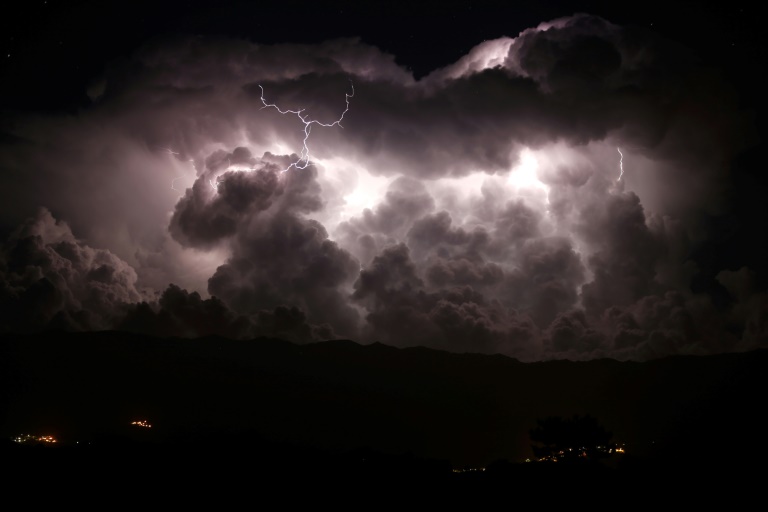
‘Lightning is a major hazard that claims many lives every year,’ the UN’s World Meteorological Organization says
GENEVA, Ferb 1 (NNN-AGENCIES) — A single flash of lightning in the United States nearly two years ago cut across the sky for nearly 770km, setting a new world record, the United Nations said.
The new record for the longest detected “megaflash”, measured in the southern US on Apr 29, 2020, stretched a full 768km, across Mississippi, Louisiana and Texas.
That is equivalent to the distance between New York City and Columbus, Ohio, or between London and the German city of Hamburg, the UN’s World Meteorological Organization (WMO) pointed out in a statement.
That lightning bolt zig-zagged about 60km further than the previous record, set in southern Brazil on Oct 31, 2018.
The WMO’s committee of experts on weather and climate extremes also reported a new world record for the duration of a lightning flash.
A single flash that developed continuously through a thunderstorm over Uruguay and northern Argentina on June 18, 2020, lasted for 17.1 seconds – 0.37 seconds longer than the previous record set on March 4, 2019, also in northern Argentina.
“These are extraordinary records from single lightning flash events,” Randall Cerveny, the WMO rapporteur of weather and climate extremes, said in the statement.
“Environmental extremes are living measurements of the power of nature, as well as scientific progress in being able to make such assessments,” he said.
The technology used to detect the length and duration of lightning flashes has improved dramatically in recent years, enabling records far greater than what was once the norm.
The previous megaflash records, from 2018 and 2019, were the first verified with new satellite lightning imagery technology, and were both more than double the prior records using data collected from ground-based technology.
“It is likely that even greater extremes still exist, and that we will be able to observe them as lightning detection technology improves,” Cerveny said.
The WMO highlighted that the new record strikes happened in the Great Plains in North America and the La Plata basin in South America, known as hotspots for so-called mesoscale convective system thunderstorms, which enable megaflashes.
It stressed that the flashes that set the new records were not isolated events, but happened during active and large-scale thunderstorms, making them all the more dangerous.
“Lightning is a major hazard that claims many lives every year,” WMO chief Petteri Taalas said in the statement.
“The findings highlight important public lightning safety concerns for electrified clouds where flashes can travel extremely large distances.”
WMO pointed out that the only lightning-safe locations are big buildings with wiring and plumbing, or fully enclosed, metal-topped vehicles.
The UN agency maintains official global records for a range of weather- and climate-related statistics, including temperature, rainfall and wind.
All such records are stored in the WMO Archive of Weather and Climate Extremes.
The archive currently includes two other lightning-related extremes.
One is for the most people killed by a single direct strike of lightning, when 21 people died in Zimbabwe in 1975 as they huddled for safety in a hut that was hit.
The other is for an indirect strike, when 469 people died in Dronka, Egypt, when lightning struck a set of oil tanks in 1994, causing burning oil to flood the town. — NNN-AGENCIES





